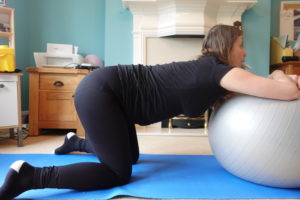Pelvic floor rehabilitation around the world
The following review is based on my experience. Consequently, it’s subjective, not an absolute truth, nor exhaustive and at the end of the day only my personal opinion! It is a review of what I saw around the world, I don’t intend to determine who is the best. In the opposite, it is more about trying to learn for the other!
As a French women’s health physio (click here for details of Elodie’s training), I had the chance to have pelvic floor rehabilitation classes in my initial training and not as a specialisation to start once graduated. Indeed, in France, pelvic floor rehabilitation is an essential part of physiotherapy degree like walking rehabilitation, neurologic treatment or post-surgery rehabilitation… Furthermore, there is no taboo! Practical classes are part of this initial training and an internship in a women’s health department is strongly recommended. And it seems to be widely known as I often hear “French spend their time doing pelvic floor exercises!” Similarly, various article more or less ironic and interested from different countries have been wrote on the topic.
Anyway! Let’s start travelling!

To start, I’ll speak about pelvic floor rehabilitation in Europe, but not whole Europe (France, Belgium, Spain, Germany) excluding UK for example. I will have to do another blog to speak in more details about difference between France and UK concerning pelvic floor rehabilitation and women’s health physio in general!
In Europe, pelvic floor is seen as a whole, meaning its rehabilitation is a global approach. As a reminder, pelvic floor muscles are a hammock located between abdominal muscles and sacrum. Therefore, it can seem weird to include abdominal, lumbar, thoracic, breathing and neurological elements to the pelvic floor rehabilitation.
Obviously, pelvic floor rehabilitation includes most of the time a perineal examination to evaluate the degree of lesion, strength, tonus and stamina of perineal muscles. It’s also the opportunity to determine pelvic floor awareness and control as well as automatism developed by the patient.
20 years ago, we finally recognized importance of abdominal/perineal work and of avoiding traumatic push on the pelvic floor. Consequently, various hypopressive gymnastic developed to offer abdominal exercises creating no extra pressure and good abdominal automatism. Similarly, sit ups, crunches… have been prohibited to integrate new techniques combining breathing and lumbar elements. To finish, “European” pelvic floor rehabilitation use automatization and postural work to integrate food habits learn in treatment to the real life!
For more details about “European” pelvic floor rehabilitation have a look at our articles about What is Pelvic Floor Rehabilitation, What is Biofeedback, Zero Pressure Gymnastic.

Let’s cross the world to see how Chines Medicine integrates perineum in its approach. Chinese medicine is built around meridian. Consequently, perineum is worked through them. Additionally, in this approach there is a direct link between bladder and intestine: when intestine function is impaired, chines medicine considers it weighs heavily on the bladder and increase new dysfunction. Improving intestine function would improve bladder function. Treatment of urogenital sphere is performed by massaging, mobilizing and using acupuncture/acupressure on specific meridian.
There is a rehabilitation named Skino-Cinetique integrating both European and Chinese approaches. It is an interesting combination taking human body as whole.

Let’s stay on the same continent to have a look at my favourite country, INDIA! A beautiful country buy so complex, in general, but even more in medicine and women’s health! One of the big difficulties is the gap between the poor rural population and a very rich minority of the urban population. Most women give birth at home without a midwife or any medical supervision. For WHO (World Health Organization) India is the country with the greatest number of pregnancy and labour deaths.
Indian culture has a close relation to nature with ancestral tradition. Some very interesting one concern women health:
- After giving birth, women rest for 12 days to be purified and recover a good health
- After delivery, midwife use tissue with curcuma and salt on the vulva to stop bleeding
- The new mom will also have a bath with NEEM leaf to prevent infection
- She will also receive belly and breast massage to prevent bleeding and mastite
Wealthy Indian women benefit from modern medical system in expensive private centres with birth preparation classes (yoga, massage, breathing meditation) and post-natal classes which to be honest is a lot better than in some occidental country…
India is beautiful but often ambivalent, for example the social statute of women. To explain this idea, I’ll share an anecdote which happens to me several years ago. I had an Ayurveda massage in Vârânasi (in my opinion the most beautiful Indian city!). Obviously, massage therapist were women, wearing sari to hide most of their body. Similarly, we had an infinite amount of towel to cover our naked body. In summary, it was a very puritan setting. A random conversation start and, after few minute, our massage therapist end up explaining us and to her colleague how to perform the best blowjob to our partner!
Indian ambivalence… Everybody already heard of geisha ball used for sexual and sometimes therapeutic purposes in Occident. In India, they are well known to improve tonicity, strength and position of sexual organ. This “tool” is passed from mother to daughter to keep a strong body and to improve the “wellbeing” of her partner.

Let’s visit another continent! To speak about Africa (just a small part), I am going to share the experience of my good friend Leonie who worked as a GP in a gynaecologic service in Togo. The room where the women give birth would horrify any European woman. Mother and new born mortality rate reach the sky. Complex perineal tear, fistula (even to the anus) and use of forceps are common… Consequences of giving birth are catastrophic. In other African country situation is obviously better. Like in Tunisia or Morocco, pelvic floor rehabilitation is commonly used but sadly often limited to electrostimulation without a global approach specifically adapt to the individual need of the patient.
I am not going to digress too much on the topic, but perineal trauma happening before pregnancy (laceration, mutilation, excision…) are still exist in some population and increase the difficulty of giving birth and recovering. I had the opportunity to know “gynécologue sans frontière” and their mission in my professional experience. If you are interested by the topic, I highly recommend their report on the subject. Thanks to them and “handicap international” (probably with other NGO), various project for surgical reparation, to prevent teenage pregnancy, rehabilitation pre and post obstetric surgery were developed.
Here it was, a quick world tour of pelvic floor rehabilitation. Obviously, it was very superficial and many other cultures could have been mentioned or seen more in depth. But as I am passionate by this topic, I just wanted to share it with you!
Please leave a comment with your own experience on a mentioned culture or another one, I’ll be really interested to discover more!



